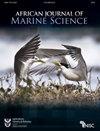降雨驱动的营养负荷影响西南印度洋的沿海浮游植物:毛里求斯岛的泻湖
IF 1.4
4区 生物学
Q3 MARINE & FRESHWATER BIOLOGY
引用次数: 0
摘要
本研究旨在测试降雨驱动的营养物质负荷对毛里求斯西北海岸Trou aux Biches泻湖浅水中微型浮游生物动力学的影响。在2017年3月至4月的两次降雨期间,分别监测了海岸、泻湖和珊瑚礁三个区域的浮游生物密度、多样性和估计生产力的变化。陆地径流的平均营养负荷为15.5%,盐度下降了2.5%。在两次降雨事件之后,海岸和泻湖的总浮游生物密度(TMPD)在一周内增加了3倍,其中硅藻占主导地位,而珊瑚礁的密度相对保持不变。这些微小浮游生物密度的变化伴随着充足的硅酸盐水平(>2µM)和高的硝酸盐与硅酸盐比例(2.84-6.93)。在这项研究中,观察到的硅藻、甲藻和蓝细菌的属数分别为28、12和3。Shannon–Wiener等稳定性和均匀度指数显示,在降雨事件之前,硅藻和蓝藻的多样性值很高,而在降雨事件之后,甲藻的多样性也很高。雨季前后,浮游植物叶绿素a含量、相对电子传输速率和估计生产力都有所增加。TMPD和叶绿素a与营养物质、盐度和温度呈正相关。有毒藻类物种,如亚历山大藻(Alexandrium)、恐龙藻(Dinophysis)和三角藻(Tripos),虽然没有开花密度,但都有记录。这些发现表明,降雨驱动的营养负荷导致浮游生物密度和估计生产力的增加,以及其多样性的变化。本文章由计算机程序翻译,如有差异,请以英文原文为准。
Rainfall-driven nutrient loading affects coastal phytoplankton in the southwestern Indian Ocean: a lagoon at Mauritius Island
This study aimed to test the effects of rainfall-driven nutrient loading on the microphytoplankton dynamics in the shallow water at Trou aux Biches lagoon on the northwest coast of Mauritius. Changes in density, diversity and estimated productivity of microphytoplankton were monitored in three zones—coast, lagoon and reef—during two rainfall periods of 4 and 3 days’ duration, respectively, in March–April 2017. The average nutrient loading from terrestrial runoff was 15.5% and the salinity decreased by 2.5%. Following the two rainfall events, a 3-fold increase in total microphytoplankton density (TMPD), with a dominance of diatoms, was noted within a week at the coast and lagoon, while it remained relatively unchanged at the reef. These changes in microphytoplankton densities were concomitant with adequate levels of silicate (>2 µM) and high nitrate:silicate ratios (2.84–6.93). During this study, the numbers of genera of diatoms, dinoflagellates and cyanobacteria observed were 28, 12 and 3, respectively. The Shannon–Wiener, equitability and evenness indices showed high diversity values for diatoms and cyanobacteria prior to the rainfall events and for dinoflagellates after the events. The chlorophyll a content, relative electron transport rate, and estimated productivity of microphytoplankton increased during and after the rainy periods. TMPD and chlorophyll a were correlated significantly and positively with nutrients, salinity and temperature. Toxic algal species such as the dinoflagellates Alexandrium, Dinophysis and Tripos were recorded, although not in bloom densities. These findings indicate that rainfall-driven nutrient loading led to an increase in microphytoplankton density and estimated productivity, and a change in its diversity.
求助全文
通过发布文献求助,成功后即可免费获取论文全文。
去求助
来源期刊

African Journal of Marine Science
生物-海洋与淡水生物学
CiteScore
2.60
自引率
16.70%
发文量
17
审稿时长
6-12 weeks
期刊介绍:
The African (formerly South African) Journal of Marine Science provides an international forum for the publication of original scientific contributions or critical reviews, involving oceanic, shelf or estuarine waters, inclusive of oceanography, studies of organisms and their habitats, and aquaculture. Papers on the conservation and management of living resources, relevant social science and governance, or new techniques, are all welcomed, as are those that integrate different disciplines. Priority will be given to rigorous, question-driven research, rather than descriptive research. Contributions from African waters, including the Southern Ocean, are particularly encouraged, although not to the exclusion of those from elsewhere that have relevance to the African context. Submissions may take the form of a paper or a short communication. The journal aims to achieve a balanced representation of subject areas but also publishes proceedings of symposia in dedicated issues, as well as guest-edited suites on thematic topics in regular issues.
 求助内容:
求助内容: 应助结果提醒方式:
应助结果提醒方式:


